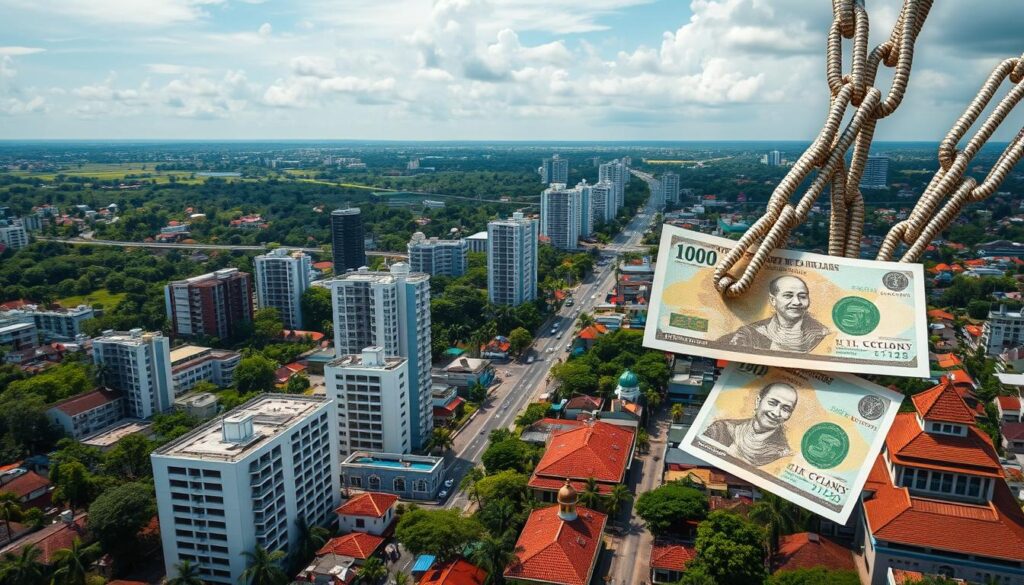Ranil Wickremesinghe Sworn in as Sri Lanka’s New President
In a highly secured parliamentary complex, Ranil Wickremesinghe was inaugurated at 73. He became the New President of Sri Lanka. This event marks the start of a new chapter in the country’s politics. Despite his connection to the controversial Rajapaksa regime, which many blame for financial woes, Wickremesinghe takes the reins. His leadership comes as protests calm, thanks to a strong parliament vote of 134 to 82.
He promises peace and order as Sri Lanka‘s eighth executive president. Wickremesinghe vows to bring change and stability during ongoing political crisis.
Ranil Wickremesinghe will serve as president until November 2024, showcasing a pivotal moment. Sri Lanka faces severe economic challenges, including inflation and shortages. The new leader’s priority is to kickstart the economy and restart talks with the International Monetary Fund. They hope to secure a $3 billion bailout.
The nation’s path forward relies on Wickremesinghe’s policies and reforms, states former Speaker Karu Jayasuriya. He underscores the need for a multi-party interim government to address these challenges swiftly.
As Wickremesinghe prepares for his role, he faces a nation of diverse communities. He targets education reforms as critical to recovery and growth. The entire country watches closely, hoping for effective governance.
Key Takeaways
- Ranil Wickremesinghe was inaugurated as the New President of Sri Lanka within the parliament complex.
- He won the presidency with 134 votes, serving until November 2024 as the nation’s eighth executive president.
- Sri Lanka’s economic crisis has incited widespread protests and a public demand for governmental change.
- Wickremesinghe, with a 45-year-long parliamentary career, has the urgent task of steering the country towards economic recovery.
- Implementing educational reforms sustains as a focus in preparing for a resilient future workforce in Sri Lanka.
- Former Speaker Karu Jayasuriya has called for reforms and suggests a multi-party interim government for economic stability.
A Tumultuous Path to Presidency
In recent years, Sri Lanka faced a huge Economic Crisis. This crisis led to a big Political Change. High inflation and the lack of basics caused major Protests. This made people ask for new Leadership.
The Economic Crisis Leading to Political Change
This tough situation made citizens very upset. They protested against the government’s failure to fix the economy. These conditions prepared the ground for big political shifts. It brought new leaders into the Sri Lanka President race.
Protests and the Departure of Gotabaya Rajapaksa
Many complaints led to big protests. The protests wanted changes and responsibility. They played a key role in Gotabaya Rajapaksa‘s exit. He left the presidency amid scandals and poor economic decisions. This forced him to resign and leave Sri Lanka.
Ranil Wickremesinghe’s Controversial Path to Leadership
Ranil Wickremesinghe’s rise to power was full of disagreements. Going from Prime Minister to the Controversial Acting President role, then President, was tough. This period included a state of emergency and the military stopping protests at government places. His journey promised a chance to improve the economy during chaos.
During this time, elections brought big changes and reform promises. For more details, check out OMP Sri Lanka. They have an article about President Anura Kumara Dissanayake’s decisive moves.
The future is still unclear, but there’s hope for better leadership in Sri Lanka. People want leaders who put the country first, not their own needs.
Public Reception and Political Backdrop
Ranil Wickremesinghe became Sri Lanka’s president during a tough time. The country, home to 22 million, is facing a big crisis. People have mixed feelings about him. Some hope he will improve things, while others doubt it. Wickremesinghe has been prime minister six times. He’s now leading the nation through severe economic problems.
Many people didn’t like the choice of Wickremesinghe as president. They wanted big changes, not someone close to the old government. There have been big protests in Colombo since April 9. But Wickremesinghe is trying to fix the economy. He is talking to the IMF and World Bank. This is like when he got $4.5bn in help in the early 2000s.
Wickremesinghe’s state of emergency move shows how serious the situation is. Sri Lanka badly needs good leadership now. Wickremesinghe is skilled in dealing with other countries. This will help him as he talks to the IMF and countries like China and India. But everyone will watch him closely. They want to see if he can bring the country together and solve the debt problems.


